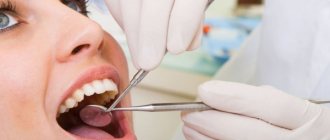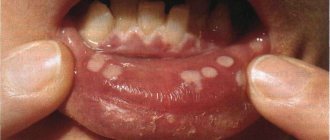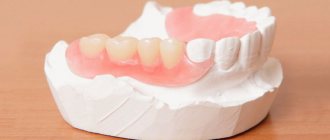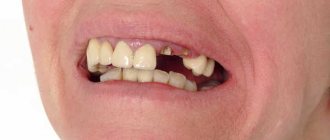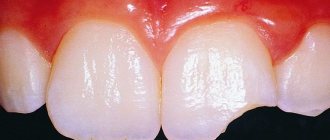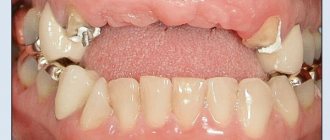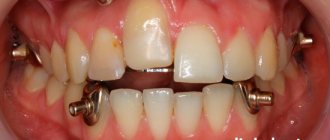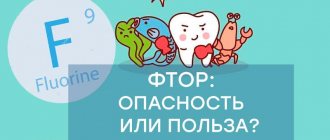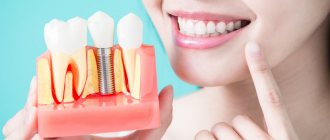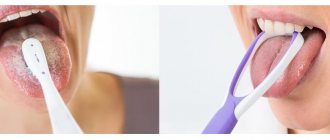How to restore the body after holidays, rich in wild feasts and large amounts of alcohol? In the “ Morning of Russia ” program, recommendations were given by the head of medical programs of the All-Russian public charitable foundation “No to Alcoholism and Drug Addiction” Sergei Polyatykin.
According to him, the human body’s ability to cleanse itself is high. However, after long holidays, when people overeat and abuse alcohol, the body needs to be helped to get in shape, the expert noted. To determine whether the body has been affected, you need to look at the tongue and the whites of the eyes. If the tongue is white and coated, this means that the stomach and intestines have been damaged. Redness of the eyes also indicates this, said Sergei Polyatykin.
What dangers lie in wait here? Firstly, this is an increase in pressure, secondly, problems with the liver, intestines and stomach, thirdly, this indicates digestive disorders and changes in metabolism, that is, the acid-base balance of the blood, the expert explained.
How can you help in this case? To begin with, the acid-base balance should be normalized, Polyatykin advised. This means you need to drink more liquids - kefir, matsoni, mineral water, preferably without gas, natural juices, not in packages, but freshly squeezed or canned at home, the specialist clarified. Under no circumstances should you drink strong tea or strong coffee, he warned. This can lead to a sharp increase in pressure and vascular permeability, which is very dangerous, the expert noted.
Sergei Polyatykin also recommended not drinking alcohol after ten o’clock in the evening, since metabolism sharply decreases at night, and the body becomes more defenseless against various poisons.
In the event that you need to come to your senses as soon as possible, Sergei Polyatykin recommended three components: paracetamol, a contrast shower and a hot, but not strong drink (tea or coffee).
← Return to store
The oral mucosa is a bacterial environment. As a result of the vital activity of microbes, formations appear on the tongue, palate and cheeks. In general, this is the norm and by regularly carrying out hygiene procedures, as well as using a mouthwash, a person can easily get rid of plaque.
But what to do if this problem begins to bother you and leads to consequences such as bad breath and an unpleasant taste in the mouth? In this article we will tell you about the reasons for changes in the color of the tongue, the types of plaque and ways to get rid of it at home.
Experienced therapists can make a primary history just by looking at the patient's tongue. The way the oral cavity looks is one of the most accurate indicators of the health of the body as a whole.
Normally, a person's tongue has a light pink tint, but a small amount of plaque is acceptable. It should be light, loose, and the receptors should be visible through it. Why is this not a deviation?
A completely clean surface is rare and indicates proper self-care. Experts consider it normal to have a thin layer of plaque on the tongue, gums and teeth.
These deposits may consist of:
- saliva;
- epithelial particles;
- leftover food;
- bacteria.
All of these components are considered natural waste products of our body. This can be eliminated with the help of daily hygiene procedures: mechanical cleaning of teeth and tongue with a brush.
You should consult a doctor if plaque:
- changed color from light gray or white to yellow, greenish, brown or even black;
- became denser and led to the appearance of the “coated tongue” symptom.
The reason for the visit may also be other changes, such as the appearance of white particles in the saliva. If this secretion has become cloudy, then there is a high probability of a fungal disease - candidiasis. Thus, deposits on the walls of the oral cavity consist of pathogens and leukocytes on which they feed. In this case, it is necessary to consult with a medical specialist as quickly as possible so that he can prescribe treatment.
Other common causes of plaque on the tongue, gums, teeth and inner cheeks include:
- Taking antibiotics and other medications. This occurs due to the fact that the aggressive chemical composition of medications disrupts the acid balance of the gastric microflora. As a result, the environment inside the mouth becomes more alkaline, leading to the formation of a white film.
- Diseases of the gastrointestinal tract. Due to the disproportion of beneficial and harmful bacteria, a white or yellowish sediment is observed on the tongue. As a rule, disturbances in the digestive system are accompanied by bad breath.
- Decreased immune function of the body. Most of the immune cells that actively fight infections and other pathogens are concentrated in our stomach. Therefore, the appearance of the tongue serves as an accurate indicator of the weakening of the protective function. If you feel unwell and notice thickening of plaque in your mouth, then most likely you have reduced resistance to disease. If these symptoms occur, you should consult a doctor.
- Bad habits. Regular drinking of alcohol or smoking cigarettes leads to a more active spread of bacteria in the walls of the mucous membrane. Dentists note that smokers have denser plaque, which is difficult to clean at home and requires the intervention of a specialist. Often the deposits have a dark tint, and patients themselves note a bitter taste in the mouth.
- Infectious and/or viral diseases. Regardless of the type of infection or strain of the virus, the human immune system suffers and the number of pathogens increases, which leads to their “settlement” in the mouth.
- Poisoning. During intoxication, the body tries to establish self-regulation and get rid of the substance recognized as poison. Therefore, profuse nausea, diarrhea and sweating occur. When the cause itself is eliminated and after the normal state is restored, the plaque will disappear on its own.
- Food. The appearance of plaque after eating food is not a deviation, since it consists of food particles that are easy to get rid of by rinsing. But dentists recommend doing a short flossing session after you've eaten. In the Stommarket online store you will find a special medical thread, Curaprox, which has the optimal thickness for removing food debris from hard-to-reach places.
- Disturbances of the endocrine system. A coated tongue is a sign of problems with hormone production. Therefore, if you suspect abnormalities in the functioning of the internal secretion organs, consult a doctor immediately.
REMEMBER! The distribution of plaque depends on the anatomical features of the tongue. It is a muscular organ covered with a mucous membrane. There is always a greater accumulation of “sediment” at the root, since this part is less mobile and comes into contact only with the soft palate. The tip of the tongue and the rest of the surface should normally have more transparent layers, because they are more capable of self-cleaning when a person speaks or eats.
To avoid problems with your oral health, the optimal frequency of medical examinations should be once every six months.
It is better to entrust the difference between natural formations and pathological ones to a medical specialist. But still, a person himself is able to conduct a primary diagnosis.
What you need to pay attention to first:
- color;
- density;
- location;
- character (consistency: uniform, lumpy, rough or smooth; presence or absence of spots);
- localization;
- ease of cleansing;
- frequency of reappearance.
If you do not complain about the state of your health, but there is still plaque, then these are usually formations that appear in the morning after a night's sleep or in the evening. They are light in color - white or transparent. Through them it is easy to see the surface of the tongue and the papillae on it. It is a thin, non-viscous film. It is evenly distributed over the walls of the oral cavity and can be easily cleaned with a toothbrush or floss.
Where to go if you have these symptoms?
The main symptom of glossalgia is a burning sensation on the tip of the tongue. There is also a similar sensation in the form of tingling. The mucous membrane remains intact and not inflamed.
The disease has no visible symptoms unless injury is observed.
The disease is difficult to determine on your own because the signs may be present for a long period of time and not cause concern. They can appear and disappear. Exacerbation develops only due to irritation factors.
Symptoms:
- With glossalgia, a burning sensation is accompanied by dryness in the mouth. When chewing, the feeling of lack of fluid increases.
- With pathology of the gastrointestinal tract, the root of the tongue has a yellow-white color. Some patients experience increased salivation.
- With the disease, diction may be impaired or chewing food may become difficult.
- Painful symptoms can be located on the surface of the entire tongue. The manifestation depends on the emotional state and the functioning of the nervous system.
- If after prolonged communication the pain intensifies, then this is a sign of an allergic reaction, which is accompanied by swelling of the organ.
Glossalgia is not considered an independent disease, and the signs indicate problems in the organs. With proper diagnosis, the lesion can be easily determined.
To diagnose the cause of pain in a particular area of the tongue, you should immediately consult a doctor. If these symptoms are associated with serious diseases, then self-medication will only worsen the situation.
If there is no idea what could be the reason. The first person you should contact is the dentist.
Afterwards, the following specialists can help with diagnosis:
- Gastroenterologist
- Therapist
- Surgeon
- Hematologist
- Endocrinologist
- Dermatologist
Pain in the tongue can be caused by diseases falling within the scope of practice of any of these doctors. The specialist will examine the patient for possible mechanical damage to the mucous membrane or sharp edges of the teeth, stomatitis.
If this is not the cause of the pain, the doctor will prescribe a series of tests and studies to identify the cause and prescribe treatment as soon as possible. These include:
- General and biochemical blood test;
- Analysis of urine;
- Level of gastric secretion;
- FEGDS
- Hormonogram
- Ultrasound of the abdominal organs
- X-ray of the stomach with contrast
To exclude oncological diseases, computed tomography or magnetic resonance imaging is prescribed.
The results obtained play a decisive role in determining the disease, the symptom of which is pain in the tongue. A course of treatment prescribed by a specialist will eliminate the root of the problem, and self-medication based on eliminating pain will only worsen the situation, so it is very important to seek qualified help in a timely manner.
Causes
The reasons for the appearance of white plaque on the tongue are varied:
- Acute and chronic lesions of the tongue itself: inflammation, infections, exposure to medications
- Lesions of the tongue in various diseases - infectious, internal organs, hypovitaminosis, dysbacteriosis, oncology and others
- Not associated with diseases: poor hygiene, eating white foods, alcohol, smoking, unsuitable toothpaste and mouthwash.
Often, a white coating on the tongue is a signal of gastrointestinal diseases, a consequence of eating white and sweet foods, poor oral hygiene or, conversely, using inappropriate hygiene products, smoking, drinking alcohol and thrush. Scientists have proven that even hormonal changes such as menopause lead to a coated tongue, dryness and burning (see symptoms of menopause in women).
Gastrointestinal diseases
Other reasons
Signs of amphetamine use
Signs of amphetamine use include organic and mental disorders.
People with an amphetamine overdose usually remain lucid and oriented.
A person using amphetamines usually does not show signs of disordered thinking or blunted emotional reactions.
Signs of an amphetamine overdose include: epileptic seizure, cardiovascular failure. An amphetamine overdose is likely to cause dilated pupils, rapid heart rate, and high blood pressure.
Symptoms of amphetamine psychosis include: paranoia, hypersexuality, delusional thinking, visual, auditory, olfactory and tactile hallucinations, but orientation and memory are preserved.
Tongue diseases
- catarrhal, ulcerative, desquamative glossitis, “geographical” tongue
With desquamative and “geographical” glossitis, the tongue is covered with a white coating with red spots. Desquamative glossitis is a sign of general dysbiosis and serious systemic diseases of the body. Red spots represent areas where either the epithelium is absent or the altered papillae of the tongue are grouped together. The cause of “geographical” glossitis is not clear; inflammation in the areas of desquamation of epithelial cells is not detected. It is believed that the tongue becomes such a bizarre shape as a result of a genetic disorder.
Infectious diseases
This is primarily scarlet fever, dysentery, diphtheria, tonsillitis, gonorrhea, HIV infection.
If a person is sick with one of these infectious diseases, he is unlikely to find out why there is a white coating on his tongue. These are quite serious diseases that bring suffering primarily with their main symptoms: high fever, pain, rashes, discomfort, diarrhea and others.
The doctor may see a red tongue with a white coating, pinpoint rashes on the tongue, ulcers also covered with a white coating and other changes that will be secondary to these infectious pathologies. After infection with HIV in the AIDS stage, a white coating on the tongue appears due to fungal, bacterial, viral infections, which, in the normal state of the immune system, do not make themselves felt.
Consequences of amphetamine use
Amphetamine can greatly accelerate the human nervous system; it stimulates almost all parts of the brain. Such stimulation of the brain forces the human body to intensively spend all its energy and mental resources.
A person is literally torn from the inside by the appearance of energy; he is able to dance for hours without getting tired. Attention increases, the feeling of fatigue disappears, self-confidence appears, appetite disappears, and you may not sleep for several days.
These effects occur because amphetamine promotes the release of adrenaline, norepinephrine and dopamine.
Adrenaline and dopamine cause a significant rise in blood pressure, increase heart rate, develop cardiac arrhythmias, significantly increase cerebral blood flow and increase intracranial pressure.
When taking amphetamine again or increasing its dose, cases of convulsions, psychosis, and loss of consciousness are not uncommon.
Diseases of internal organs
Changes in the tongue due to pathologies of the gastrointestinal tract were discussed above, so this table will show diagnostic signs of diseases of other organs and systems. They are only approximate, since they are always secondary, and only a doctor can make an accurate diagnosis.
Medium size, not enlarged
|
| |
| Acute gastritis | the tongue is covered with a thick white-gray coating, the side surfaces and tip are clean, dryness is a concern. At the same time, stomach pain, nausea, and other dyspeptic symptoms are noted. | |
| Chronic gastritis | on the tongue there is a coating of white-yellow, as well as white-gray color, enlarged papillae are visible, like small spots. I'm worried about heaviness in the stomach and belching. (see treatment of gastritis at home) | |
| Peptic ulcer | This disease can be suspected if a plaque appears on the root of the tongue, tightly attached, and white-gray in color. If you have a stomach ulcer, you are worried about plaque and burning, hunger pains that stop with eating | |
| Acute pancreatitis | there is a yellow-white coating on the tongue, severe dryness in the mouth, and changes in taste sensitivity. There is a sharp pain in the left hypochondrium | |
| Chronic pancreatitis | white coloration of the tongue appears due to thrush, which develops as a result of metabolic disorders in the body and hypovitaminosis | |
| Stomach cancer | appears on the tongue as a dense white coating with a characteristic odor due to the abundance of microorganisms and leukocytes | |
Candidiasiswith thrush in the area of the tongue, plaque and burning are disturbing, while white masses of a cheesy consistency are poorly removed, and a wound surface is found underneath them. Candidiasis is a common fungal disease that develops with long-term use of antibiotics, strong medications (cytostatics, glucocorticosteroids), drugs, oral contraceptives, alcohol abuse, in people with weakened immunity due to HIV infection, dysbacteriosis, hypovitaminosis, and severe general diseases. | ||
| Food coloring and sweet foods |
| |
| Poor oral hygiene |
| |
| Intoxication |
| |
| Bad habits |
It is for this reason that after a stormy party there is a high probability of finding a tongue with a white coating in the morning. | |
| Heart diseases | There is a whitish coating on the front third of the tongue |
| Lung diseases | There is a white coating on the front third of the tongue and along the edges |
| Kidney diseases | There is a white coating along the edges of the back third of the tongue |
| Immune system diseases | White coating on the tongue characterizes the corresponding infectious disease resulting from immunodeficiency (candidiasis and others) |
| Diseases of the liver, gall bladder and pancreas | Yellow and brown coating on the tongue |
| Diseases of the salivary glands | White coating on the entire tongue, unpleasant odor, dry mouth |
| Anemia | The tongue is pale, which creates the illusion of the presence of plaque. He may or may not be |
| Endocrine system diseases | Dryness, white coating can cover the tongue entirely or in spots, under which there are erosions and ulcers |
How to quickly remove swelling after alcohol?
If a person is wondering how to remove swelling after alcohol, it is worth saying right away that it is possible to help the body cope with the problem. First of all, you need to give up the idea of getting hungover . Alcohol should be excluded. The next morning after a feast, you can drink brine or water, but not alcohol. Even beer is excluded. Next you need to detoxify. Activated carbon, Sorbifer and other absorbents help cleanse the body and return it to normal.
But what can you do to remove accumulated water from tissues? For this purpose, it is wise to drink a diuretic and various herbal teas. Chamomile, calendula or St. John's wort help well. Green tea also helps, especially with honey and lemon. It relieves hangovers and relieves puffiness under the eyes.
If severe swelling occurs after alcohol, and it is expressed locally, for example, under the eyes, then you can try compresses. Chamomile or black tea can be applied as compresses. It is advisable to alternate warm and cool compresses to enhance the effect.
Some vegetables and herbs help a lot. You can cut potatoes or cucumbers into rings and apply the circles to the swollen area. If you have fresh parsley, you can crush it and use it in the same way. It is also better to grate raw potatoes, chop them, and then use them for compresses. After all, the juice will then stand out better.
One recipe with parsley involves chopping it and soaking it in green tea, which has already cooled. After 20 minutes the mixture can be applied. It is kept for about 15 minutes, after which the restoration of the problem area should begin. By the way, the skin will also become fresher .
White coating on the child's tongue
Children may also develop a white coating on the tongue. Parents should not worry in the following cases:
- plaque covers the tongue with a thin layer and can be easily removed with a brush
- the child has just eaten milk, dairy or fermented milk products
- the baby does not like to brush his teeth, eats a lot of sweets - in this case, of course, you need to worry, but only in order to limit sweets and accustom the child to regular oral hygiene. The search for any disease should begin when these measures do not lead to clearing of the tongue.
- the child drew with white felt-tip pens, pencils, paints, and chalk. All these instruments could easily fall into the young artist’s mouth.
What to do if parents see a strong white coating on the baby’s tongue? The child probably has thrush - this is a common fungal disease of newborns, especially in the absence of breastfeeding, prematurity, improper care, hypothermia or overheating.
Plaque on the tongue of a newborn with thrush brings a lot of suffering, the child refuses to breastfeed and cries constantly. He experiences burning and pain on the mucous membrane, erosions are found under the plaque. The risk of developing thrush increases when the mother herself or the child eats sweets if complementary feeding has already been introduced (see complementary feeding table for children under one year of age).
Other oral problems also cause white plaque to appear:
- stomatitis - inflammation of the mucous membrane of the entire oral cavity (see stomatitis in children)
- glossitis - inflammation of the tongue
- caries and its complications
- tonsillitis - inflammation of the tonsils, tonsillitis (see treatment of tonsillitis in a child)
- pharyngitis and laryngitis are infectious diseases of the pharynx and larynx). In these cases, there is direct damage to the tongue by microbial plaque and intoxication.
You can also see a white coating on a baby’s tongue with more serious diseases:
- Scarlet fever is a childhood infectious disease characterized by a rash
- diphtheria is a severe childhood infection characterized by a white coating in the mouth
- diseases of the gastrointestinal tract: gastritis, enterocolitis, dysbacteriosis
- ARVI and influenza
- chronic hypovitaminosis
Diagnostics
Who should I contact if I find a white coating on the tongue of an adult or child?
Of course, the first doctor is a dentist. He will conduct a thorough examination of the oral cavity, palpate the lymph nodes, and try to find out the possible cause of the plaque. If necessary, the doctor will refer the patient for a consultation with a gastroenterologist, infectious disease specialist, endocrinologist and other specialists.
You can independently take a general blood and urine test, culture from the mucous membrane of the tongue, test for HIV, syphilis, hepatitis B and C. The results of these tests will help the doctor make the correct diagnosis.
How to get rid of very severe swelling?
If severe, pronounced swelling of the entire body occurs, this is a very dangerous symptom. It indicates significant problems with the body and the need to be examined by a doctor. In order to relieve such swelling, you will have to carry out a whole range of measures. For detoxification, it would be better to choose Smecta or similar drugs. You also need to buy mineral water, preferably alkaline. It should be drunk in large quantities to speed up the process of getting rid of edema . You need to use mild diuretics and start moving moderately. Walking will provide just the right amount of exercise that will help the body better cope with the problem. And healthy sleep will also come in handy. It will help restore strength.
Treatment
Treatment of white plaque on the tongue is aimed at eliminating the cause and symptoms. You should trust the treatment only to a specialist, without doing it yourself, since a white coating on the tongue can be a symptom of a serious illness, including tongue cancer.
| Cause | Treatment |
| Smoking, drinking alcohol | Getting rid of bad habits, detoxification therapy, restoring water balance, protecting the liver |
| White food, sweet | After eating, rinse your mouth and brush your tongue |
| Poor oral hygiene, carious teeth, unsuitable hygiene products | Sanitation, hygiene training, thorough brushing of teeth and tongue, selection of hygiene products |
| Gastrointestinal diseases | Consultation with a gastroenterologist who will prescribe the correct therapy |
| Diseases of internal organs and infections | Consultations with relevant specialists who will prescribe the correct treatment |
| Candidiasis |
|
| Tongue diseases |
|
Symptomatic treatment of white plaque on the tongue in general diseases consists of eliminating irritating factors (spicy, hot food, dentures, sharp edges of fillings, dental sanitation), antiseptic treatment, careful oral hygiene, and the use of healing medications.
Treatment in children
Parents should take their baby to a pediatric dentist or pediatrician. It is also important to remove white plaque on your child’s tongue yourself. To do this, wrap a clean finger in sterile gauze and carefully clean the tongue. The tongue will have to be treated in the same way in case of inflammatory and infectious diseases, if the doctor recommends the use of local drugs.
- For mild cases of candidiasis, a simple soda solution can easily get rid of thrush.
- For children, it is important to numb the mucous membrane of the tongue. Kalgel helps very well with this.
- For antiseptic treatment in children, Tantum Verde and Rivanol solution are used.
- Antifungal ointments include Nystatin and Decamine.
- To speed up healing, use sea buckthorn oil, rosehip oil, and aloe liniment.

